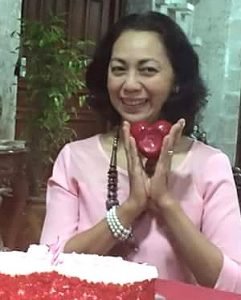This is really exciting: 30 printed-on-canvas artwork by distinguished featured artists who had captured the beat of the nation. The original works are at 6 feet by 12 feet and these have been reduced to 4 by 2 feet reproductions for convenient viewing. The Siningsaysay traveling exhibit is an art and history project of the University of the Philippines, the UP Alumni Association, and the Araneta Center, Inc.
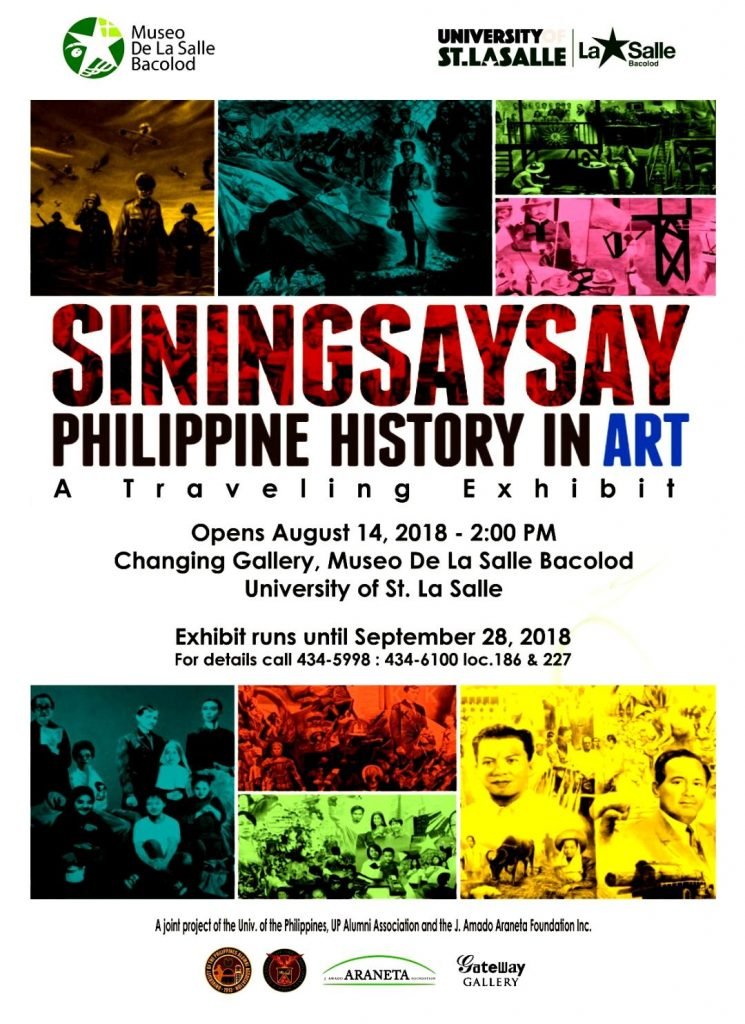
30 canvases depicting the highlights of Philippine history are “innovative means of teaching history, promoting art appreciation, understanding Filipino identity and imbibing cultural pride, constituting valuable aspect of public service.” 10 of these canvases are embedded with Augmented Reality (AR) that allows viewers to enjoy traveling back in time with visuals and audio. For this, visitors should not forget to take their phones with them in order to download the app. Siningsaysay is on exhibit at the Museo de La Salle Bacolod until September 29, 2018.
Here are a few photos and their captions that might be of interest to you. The artists’ names and artwork titles are included.
#3
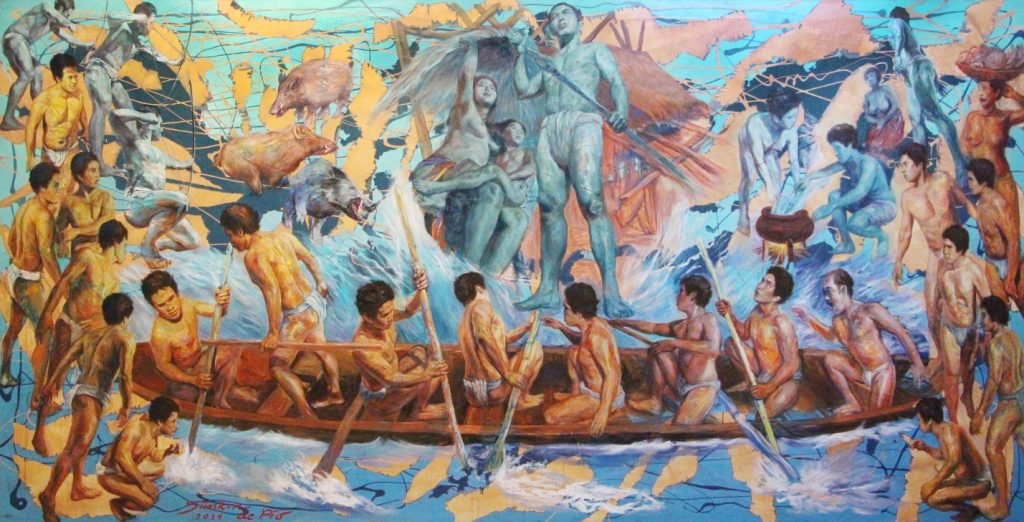
“The Filipinos belong to the Austronesian Race. There are two theories about the origin of the Austronesians. One theory says they originated in Taiwan and first settled in the northern part of the Philippine archipelago. Another theory states they originated in northeastern Indonesia and Mindanao expanding northwards.”
#6
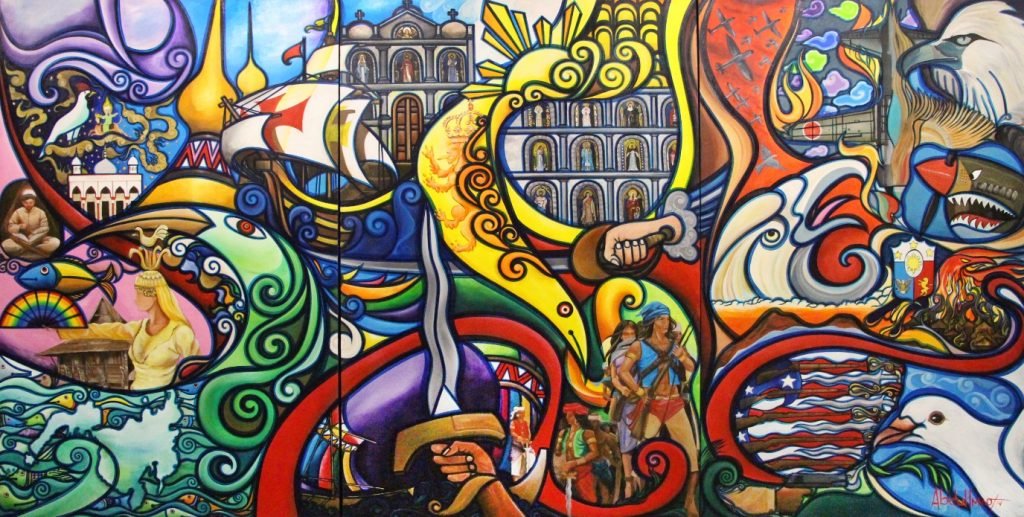
“Islam reached the shores of Sulu in 1380 with the Tausugs as the first group who accepted it as a religion and a way of life. Islam faced the Catholic faith the Spaniards brought and stood her ground during the colonial rule of both the Spaniards and Americans.”
#7
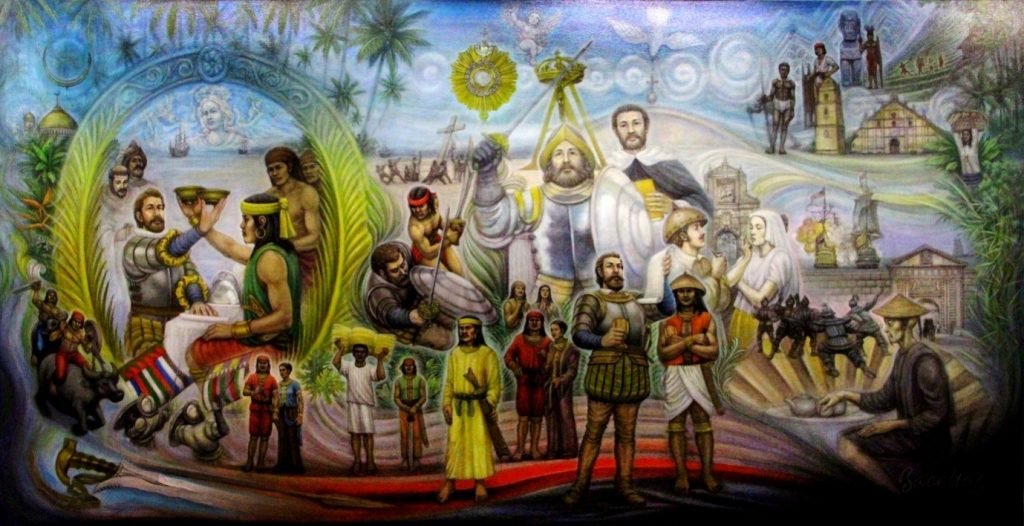
“Europe in the 16th century witnessed two countries of the Iberian Peninsula (Spain and Portugal) as pioneers in the discovery of new lands. Portugal had charted the route to the East with the voyages of Vasco de Gama reaching the Cape of Good Hope in Africa and Bartholomew Diaz reaching Calicut, India.”
#10
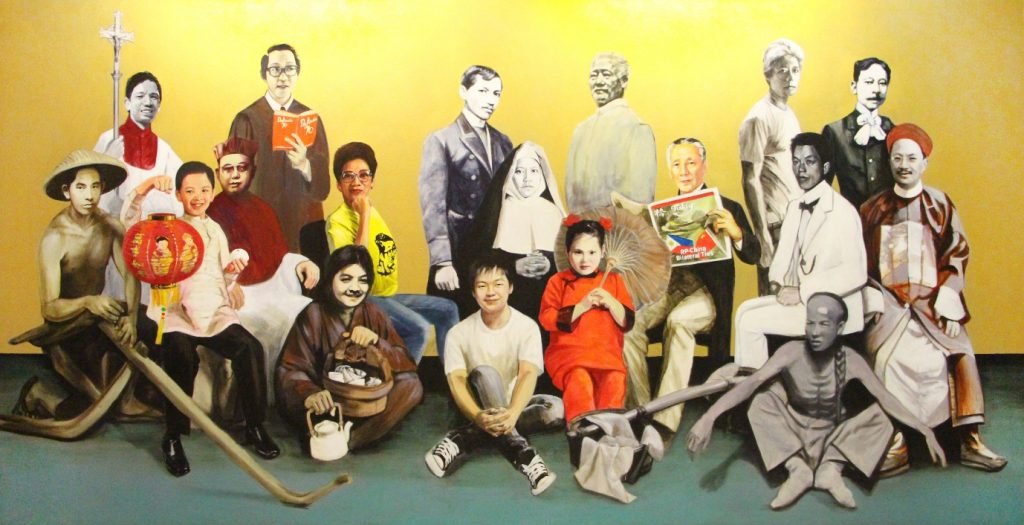
“The Chinese community in the Philippines is the oldest in Southeast Asia. Ties with China existed long before the arrival of the Spaniards. The Chinese were indispensable to the Spaniards providing the latter with many services such as coolie labor, traders and manufacturers. Since single Chinese males migrated to the Philippines or if married left their families in China, most of them cohabited with Filipino women giving rise to the Chinese mestizo class.”
#16

#21

“Manuel Roxas as president of the Third Republic assumed the difficult task of reconstructing the country. Within the short term as president, he attempted to reach out to the Huks, declared amnesty to Filipinos accused of collaboration with the Japanese and solicited American assistance for the country’s rehabilitation.”
#25
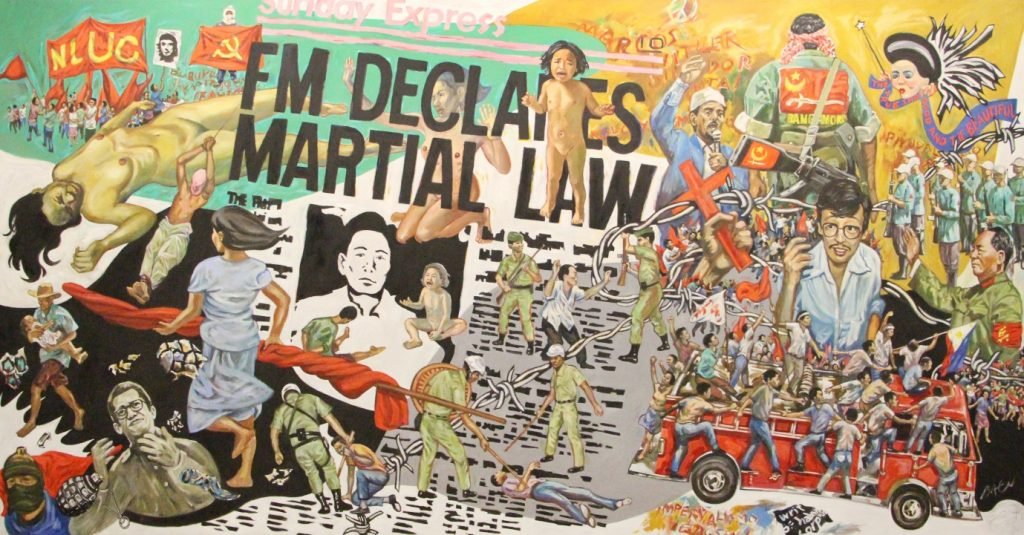
“The country entered one of its darkest moments when Martial Law was proclaimed and implemented. President Ferdinand Marcos issued Proclamation No. 1081 on September 21, 1972 placing the entire country under Martial Law. “
The exhibit goes through other administrations via Yellow Fever by Angel Cacnio, Dyipni Ride by Michael Velasco, The Journey Continues by Grandier Bella, and ends with the happy, exuberant Celebration by Romeo Carlos to highlight the religious provenance of our fiestas.
Siningsaysay: Philippine History in Art takes us down to the corridors of our past with art leading us through the gripping tales, exciting twists, and mind-opening stories of who we are as Filipinos.
The Museo de La Salle Bacolod is open everyday except Saturdays and Sundays, from 8:00 a.m. to 12:00 noon; and 1:30 p.m. to 5:00 p.m.

